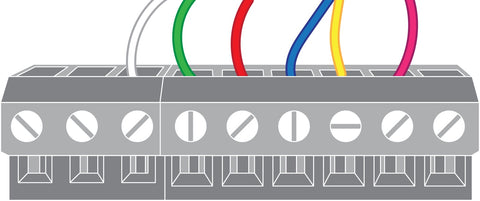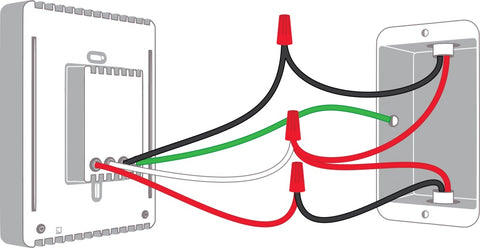Selecting the Right Smart Thermostat for Your Home
Posted by Janine Lam on

Smart thermostats are usually the first step into home automation for many smart home users. Their ability to remotely control and automate your home's heating all the while lowering your energy consumption to save on your energy bill seems like a worthwhile investment.
But with the plethora of smart thermostats available, how do you select the right one for your home? A smart thermostat provides remote control of your heating, anywhere in the world from your smartphone, but there are other features to consider to determine the best smart thermostat for your home:
Type of Heating System
Low-Voltage Heating
Low voltage systems are the most common type of heating system and the majority of homes in North America run on low voltage heating/cooling systems. Low voltage thermostats can control nearly any kind of system: furnaces, boilers, radiant heat, air conditioning, and heat pumps (to name a few). If your house has ducts and has one central thermostat for both air conditioning and heating, it’s almost sure that you have a low voltage heating system. Popular low voltage smart thermostats include Honeywell Lyric Round Wi-Fi Smart Thermostat, Honeywell Wi-Fi 9000 Color Touchscreen Smart Thermostat, or Honeywell Lyric T6 Pro Z-Wave Plus Thermostat. If you see a setup similar to this with numerous, small, thin, multi-coloured wires going into a board, you’ve got a low voltage thermostat.

High-Voltage Heating
High voltage systems or “electric heating” makes up a substantial minority of heating systems and uses baseboard heaters, convectors, or fan forced heaters to convert the house’s incoming current (120V or 240V) into usable heat. If you have one thermostat for every heater in each room, you probably have a high voltage heating system. Popular high voltage smart thermostats include Mysa Wi-Fi Smart Thermostat or Stelpro Maestro SMC402 Smart Controller Thermostat. If you see 2-4 thick wires separated into either black and red or black and white groups similar to this, you've got a high voltage thermostat:

Energy Monitoring
One of the biggest draw about smart thermostats is their ability to make your home comfortable while saving money on your energy bill. Many smart thermostats can provide energy consumption reports via their dedicated apps to help you assess potential energy savings and some even have built-in functionality to let you know the optimal settings to save the maximum amount of energy while keeping your home at a comfortable temperature. For example, the Honeywell Lyric Round Wi-Fi Smart Thermostat has an LED-Illuminated Halo Ring that turns green to indicate energy savings.
Automatic Scheduling
Smart thermostats give you the ability to schedule your heating and cooling cycles according to your routine, such as lowering the temperature when you leave for work and warming up your home, so it's nice and cozy, when you return. The biggest advantage of being able to control your heating according to your schedule is it helps reduces your energy consumption, thus saving you money on your energy bills. Some smart thermostats have learning algorithms that can learn your schedule over time and adapt automatically to changing patterns.
Precise Temperature Control
Some smart thermostats have the ability to learn your preferences and adjust the temperature according to multiple factors including the outside temperature and humidity to ensure the optimal temperature - just the way you like it.
Geofencing
Geofencing is a smart thermostat feature that uses your smartphone's location to determine your proximity from home and adjusts the temperature to save money or provide comfort for your arrival.
For example, when you leave for work and exit the geofencing perimeter, your smart thermostat will automatically detect this and operate on "away" mode and lower the temperature to save energy. When you return from work and enter the geofencing perimeter, your smart thermostat will detect this and switch to "home" mode and increase the temperature, ensuring your home is at the perfect temperature when you arrive home.
Multiple Room Control
Some smart thermostats are designed for multiple rooms in mind, allowing you to connect multiple smart thermostats and control temperatures in multiple rooms from a single app or group rooms together into zones (i.e. bedrooms, basement) to make managing your heating even simpler and for better efficiency.
Easy-to-Use Interface
There is something to be said about an easy-to-use interface as it can make or break your experience with your smart thermostat. An intuitive design that features visual cues such as colored lighting to communicate operational status or a large color touchscreen that is easy to navigate is just as important.
Share this post
- Tags: Smart Thermostats
